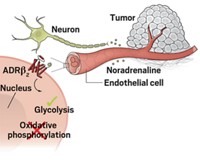Advertisement
Grab your lab coat. Let's get started
Welcome!
Welcome!
Create an account below to get 6 C&EN articles per month, receive newsletters and more - all free.
It seems this is your first time logging in online. Please enter the following information to continue.
As an ACS member you automatically get access to this site. All we need is few more details to create your reading experience.
Not you? Sign in with a different account.
Not you? Sign in with a different account.
ERROR 1
ERROR 1
ERROR 2
ERROR 2
ERROR 2
ERROR 2
ERROR 2
Password and Confirm password must match.
If you have an ACS member number, please enter it here so we can link this account to your membership. (optional)
ERROR 2
ACS values your privacy. By submitting your information, you are gaining access to C&EN and subscribing to our weekly newsletter. We use the information you provide to make your reading experience better, and we will never sell your data to third party members.
Biological Chemistry
Hardened Arteries Have Leaky Tissue
Gaps between cells in stiff blood vessels could be new target for atherosclerosis therapies
by Lauren K. Wolf
December 12, 2011
| A version of this story appeared in
Volume 89, Issue 50
Closing the gaps between cells that line patients’ arteries could be a new strategy to treat atherosclerosis, a condition that often leads to heart attacks and strokes (Sci. Transl. Med., DOI: 10.1126/scitranslmed.3002761). Increased permeability between arterial cells allows cholesterol and immune cells to accumulate in blood-vessel walls, leading to dangerous plaque formation. Using fluorescent dyes, engineered tissue, and aortas from mice, Cynthia A. Reinhart-King and coworkers at Cornell University showed that hardened arteries—those with stiff tissue scaffolding—cause cells embedded within them to increase their contractile forces and pull apart from one another. To prevent this cell contraction, the researchers focused on rho-associated kinase (ROCK), an enzyme that helps regulate cell forces and movement via structural proteins such as actin. By inhibiting ROCK with the small molecule Y-27632, Reinhart-King’s group decreased the average cell-cell gap in hardened synthetic tissue by about 2 µm. Whether ROCK itself is the best target for future therapeutics rather than other molecules further downstream in the ROCK signaling pathway remains to be seen, comments biological engineer Douglas A. Lauffenburger of MIT, but the results of this study are “enticing.”



Join the conversation
Contact the reporter
Submit a Letter to the Editor for publication
Engage with us on Twitter